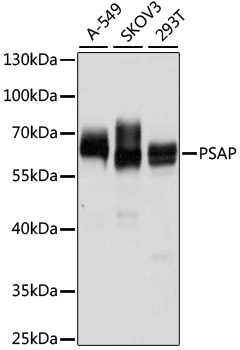
WB analysis of various sample lysates using GTX54581 PSAP antibody. The signal was developed with ECL plus-Enhanced. Dilution : 1:1000 Loading : 25microg per lane
PSAP antibody
GTX54581
ApplicationsImmunoFluorescence, Western Blot, ImmunoCytoChemistry, ImmunoHistoChemistry, ImmunoHistoChemistry Paraffin
Product group Antibodies
TargetPSAP
Overview
- SupplierGeneTex
- Product NamePSAP antibody
- Delivery Days Customer7
- Application Supplier NoteWB: 1:500 - 1:2000. ICC/IF: 1:50 - 1:200. IHC-P: 1:50 - 1:200. *Optimal dilutions/concentrations should be determined by the researcher.Not tested in other applications.
- ApplicationsImmunoFluorescence, Western Blot, ImmunoCytoChemistry, ImmunoHistoChemistry, ImmunoHistoChemistry Paraffin
- CertificationResearch Use Only
- ClonalityPolyclonal
- ConjugateUnconjugated
- Gene ID5660
- Target namePSAP
- Target descriptionprosaposin
- Target synonymsGLBA, PARK24, PSAPD, SAP1, SAP2, prosaposin, precursor of saposins, proactivator polypeptide, saposin-A, saposin-B, saposin-C, saposin-D, sphingolipid activator protein-1, sphingolipid activator protein-2
- HostRabbit
- IsotypeIgG
- Protein IDP07602
- Protein NameProsaposin
- Scientific DescriptionThis gene encodes a highly conserved preproprotein that is proteolytically processed to generate four main cleavage products including saposins A, B, C, and D. Each domain of the precursor protein is approximately 80 amino acid residues long with nearly identical placement of cysteine residues and glycosylation sites. Saposins A-D localize primarily to the lysosomal compartment where they facilitate the catabolism of glycosphingolipids with short oligosaccharide groups. The precursor protein exists both as a secretory protein and as an integral membrane protein and has neurotrophic activities. Mutations in this gene have been associated with Gaucher disease and metachromatic leukodystrophy. Alternative splicing results in multiple transcript variants, at least one of which encodes an isoform that is proteolytically processed. [provided by RefSeq, Feb 2016]
- Storage Instruction-20°C or -80°C,2°C to 8°C
- UNSPSC12352203

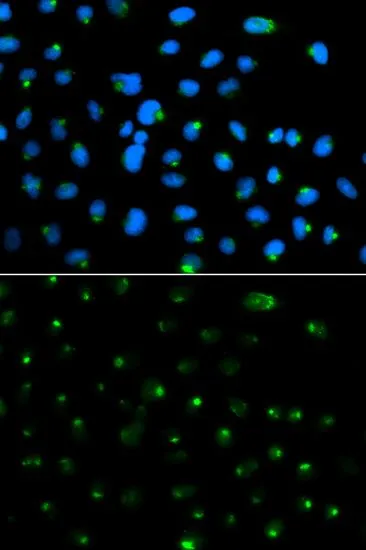
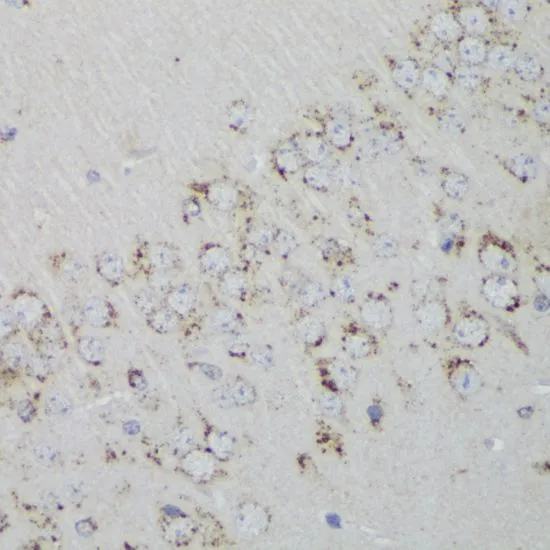
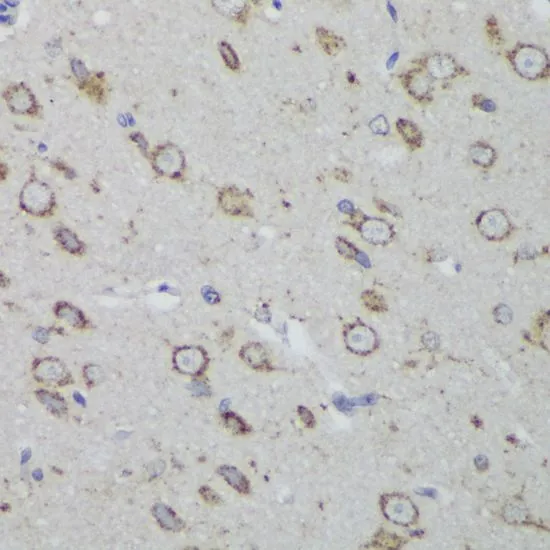
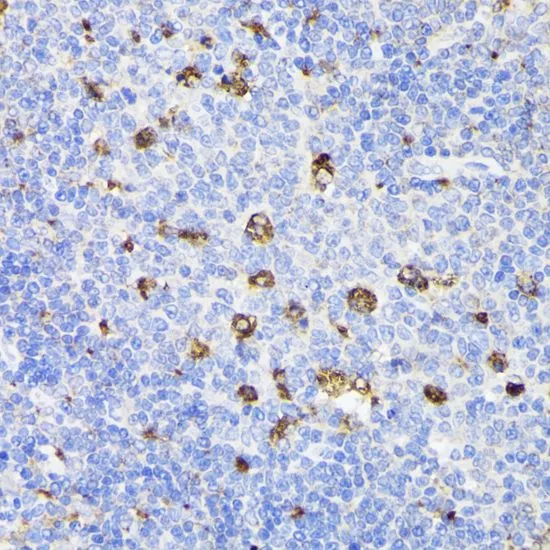
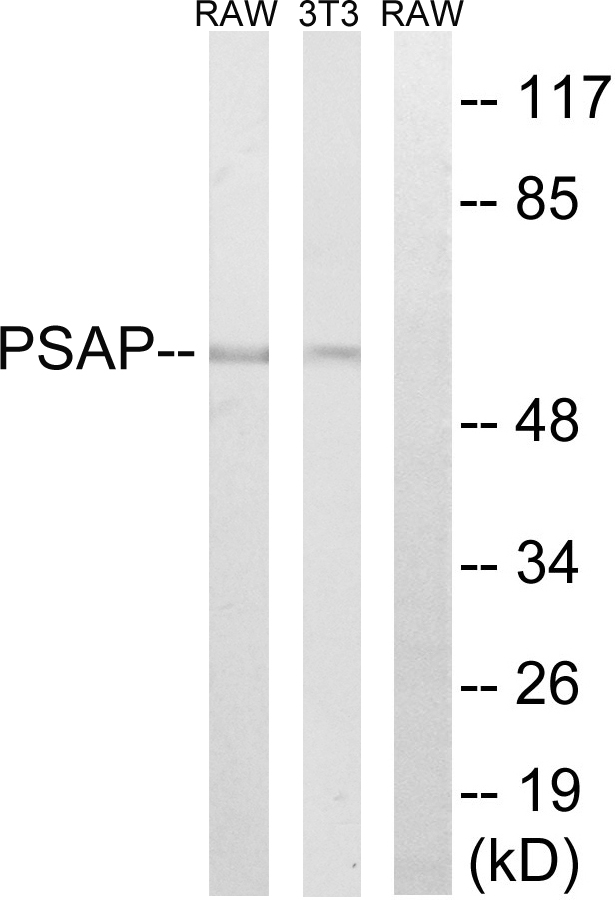


![ELISA analysis of antigen using GTX60673 PSAP antibody [4D5F4]. Black : Control antigen 100ng Purple : Antigen 10ng Blue : Antigen 50ng Red : Antigen 100ng](https://www.genetex.com/upload/website/prouct_img/normal/GTX60673/GTX60673_20170912_ELISA_w_23061123_620.webp)
